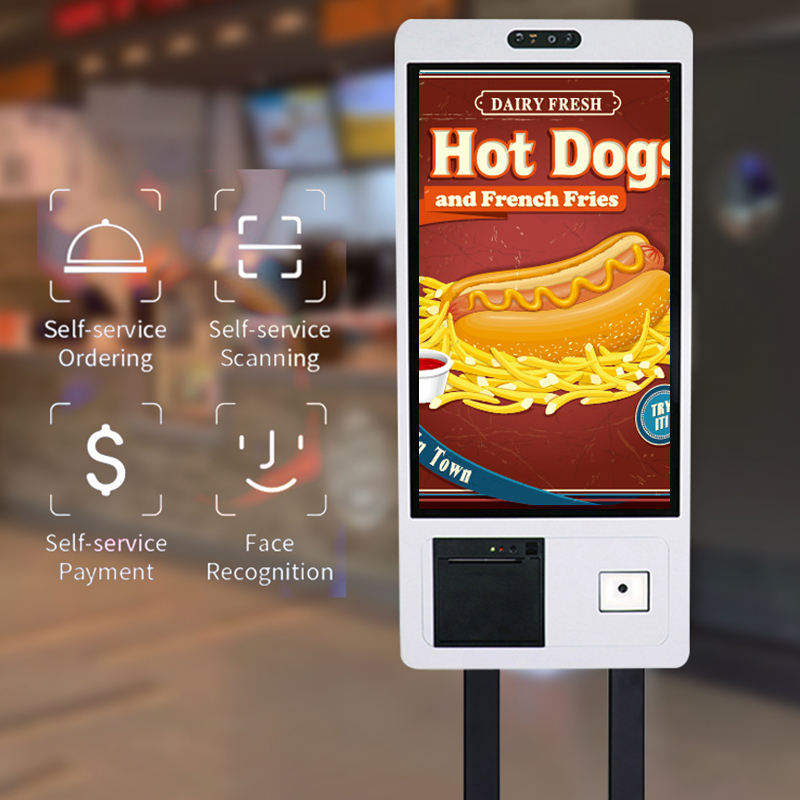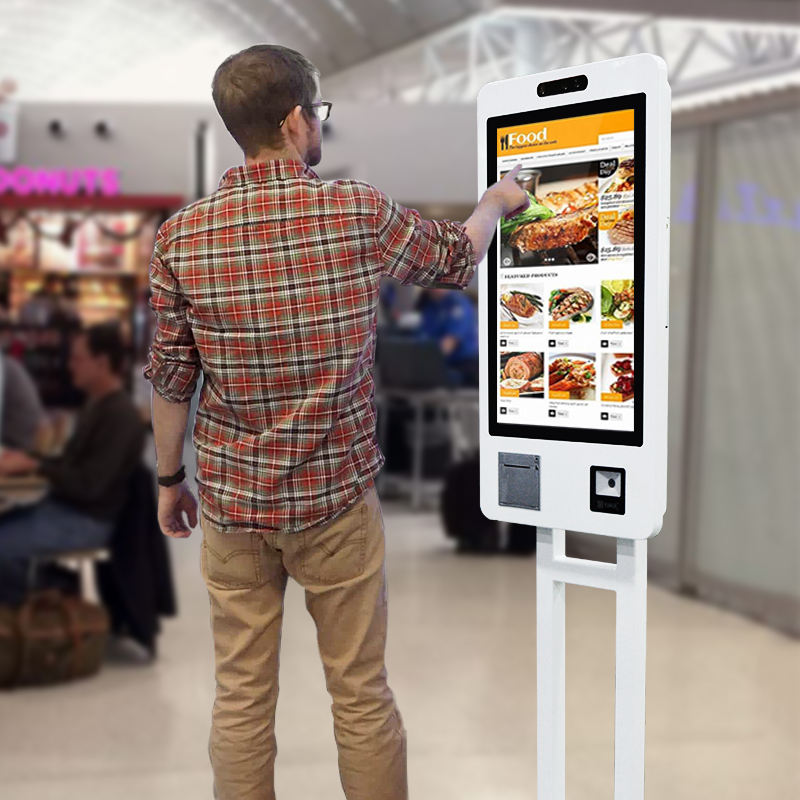A touch screen ordering kiosk is a self-service, interactive device that allows customers to place orders for food and beverages without the need for human interaction. These kiosks are equipped with a user-friendly touchscreen interface that enables customers to browse through a menu, select items, customize their orders, and make payments, all seamlessly and efficiently.
How do Touch Screen Ordering Kiosks Work?
Touch screen ordering kiosks are designed to be intuitive and easy to use. Customers can walk up to the kiosk, select the items they want to order from the digital menu, and customize their orders based on their preferences. The touchscreen interface allows for a smooth and interactive experience, with options to add or remove ingredients, select portion sizes, and choose from various customization features.
Once the customer has finalized their order, they can proceed to the payment screen, where they can choose their preferred payment method, such as credit/debit card, mobile payment, or cash. After the payment is processed, the order is sent directly to the kitchen or bar, where it is prepared and fulfilled. Customers can then collect their orders from a designated pick-up area or have them delivered to their table, depending on the establishment's setup.

Benefits of Self Ordering System
Touch screen ordering kiosks offer a wide range of benefits for both businesses and customers. Let's take a closer look at some of the key advantages of these innovative devices.
1. Enhanced Customer Experience: Touch screen ordering kiosks provide customers with a convenient and efficient way to place their orders. The intuitive interface and interactive features make the ordering process quick and easy, reducing wait times and enhancing overall customer satisfaction.
2. Increased Order Accuracy: By allowing customers to input their orders directly into the system, self service kiosk machine minimize the risk of errors that can occur when orders are communicated verbally. This helps ensure that customers receive the exact items they have requested, leading to higher order accuracy and fewer instances of dissatisfaction.
3. Upselling and Cross-Selling Opportunities: Touch screen ordering kiosks can be programmed to suggest additional items or upgrades based on the customer's selections, providing businesses with opportunities to upsell and cross-sell products. This can lead to increased average order values and higher revenue for the business.
4. Improved Efficiency: With touch screen ordering kiosks, businesses can streamline their ordering process and reduce the workload on front-of-house staff. This allows employees to focus on other aspects of customer service, such as providing personalized assistance and attending to specific customer needs.
5. Data Collection and Analysis: Kiosk ordering system can capture valuable data on customer preferences, order trends, and peak ordering times. This data can be used to inform business decisions, such as menu optimization, pricing strategies, and operational improvements.
6. Flexibility and Customization: Businesses can easily update and customize the digital menu on touch screen ordering kiosks to reflect changes in offerings, promotions, or seasonal items. This flexibility allows for quick and seamless updates without the need for printed materials.

Impact on Businesses and Customers
The introduction of self ordering kiosk has had a significant impact on both businesses and customers within the food and beverage industry.
For businesses, touch screen ordering kiosks have the potential to drive operational efficiency, reduce labor costs, and increase revenue. By automating the ordering process, businesses can reallocate resources to other areas of their operations, leading to improved productivity and cost savings. Additionally, the ability to capture and analyze data from touch screen ordering kiosks enables businesses to make data-driven decisions that can enhance their offerings and overall customer experience.
From a customer perspective, touch screen ordering kiosks offer convenience, control, and customization. Customers appreciate the ability to browse through a digital menu at their own pace, customize their orders to their liking, and make secure payments without having to wait in line or interact with a cashier. This self-service approach aligns with the growing demand for seamless and contactless experiences, particularly in light of the COVID-19 pandemic.

Furthermore, touch screen ordering kiosks cater to the preferences of tech-savvy consumers who are accustomed to using digital interfaces in various aspects of their lives. The interactive nature of these kiosks provides an engaging and modern way for customers to interact with businesses, enhancing their overall dining or shopping experience.
Challenges and Considerations
While touch screen ordering kiosks offer numerous benefits, there are also challenges and considerations that businesses need to address when implementing these devices.
One of the primary concerns is the potential impact on traditional roles within the food and beverage industry. As touch screen ordering kiosks automate the ordering process, there may be apprehension among employees about job displacement or changes in their responsibilities. It is essential for businesses to communicate transparently with their staff and emphasize that touch screen ordering kiosks are meant to complement, rather than replace, human interaction and service.
Additionally, businesses need to ensure that touch screen ordering kiosks are user-friendly and accessible to all customers, including those who may not be as familiar with technology. Clear signage, instructions, and assistance options should be provided to support customers who may require guidance when using the kiosks.
Furthermore, businesses must prioritize the maintenance and cleanliness of touch screen ordering kiosks to uphold hygiene standards and ensure a positive customer experience. Regular cleaning and sanitization protocols should be implemented to minimize the risk of contamination and promote a safe and hygienic environment for customers.
Future Trends and Innovations
As technology continues to evolve, the future of self service kiosk is likely to see further advancements and innovations. Some potential trends and developments in this space include:
1. Integration with Mobile Apps: Touch screen ordering kiosks may be integrated with mobile applications, allowing customers to seamlessly transition between ordering on a kiosk and placing orders through their smartphones. This integration can enhance convenience and provide customers with a unified experience across different channels.
2. Personalization and AI-driven Recommendations: Advanced algorithms and artificial intelligence (AI) capabilities may be leveraged to provide personalized recommendations and suggestions to customers based on their previous orders, preferences, and behavior patterns. This can enhance the upselling and cross-selling potential of touch screen ordering kiosks.
3. Contactless Payment and Ordering: With an increased focus on hygiene and safety, touch screen ordering kiosks may incorporate contactless payment options, such as NFC (Near Field Communication) and mobile wallet capabilities, to minimize physical contact during the ordering and payment process.
4. Enhanced Analytics and Reporting: Businesses may have access to more robust analytics and reporting features, allowing them to gain deeper insights into customer behavior, operational performance, and trends. This data-driven approach can inform strategic decision-making and drive continuous improvements in the customer experience.
Conclusion
Touch screen ordering kiosks have transformed the way customers interact with businesses in the food and beverage industry. These innovative devices offer a range of benefits, including enhanced customer experience, increased order accuracy, and improved operational efficiency. While there are considerations and challenges to address, the overall impact of touch screen ordering kiosks on businesses and customers is undeniably positive.
As technology continues to advance, self order machine are poised to evolve further, incorporating new features and capabilities that align with changing consumer preferences and industry trends. By embracing these advancements and leveraging the potential of touch screen ordering kiosks, businesses can elevate their offerings and deliver exceptional experiences that meet the demands of today's digital-savvy customers.
Post time: Mar-29-2024
